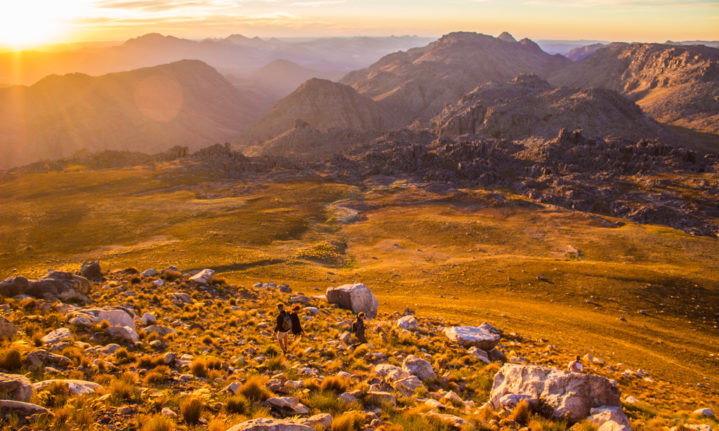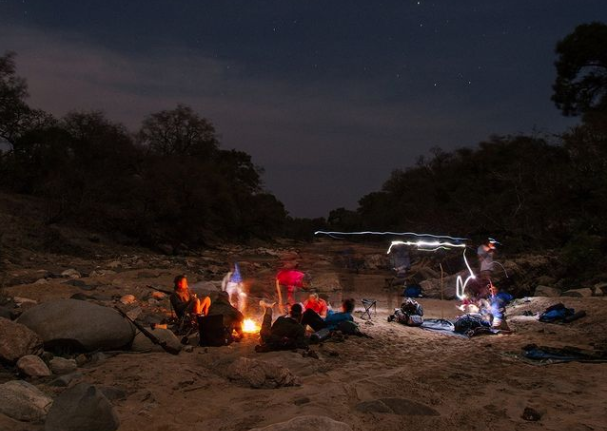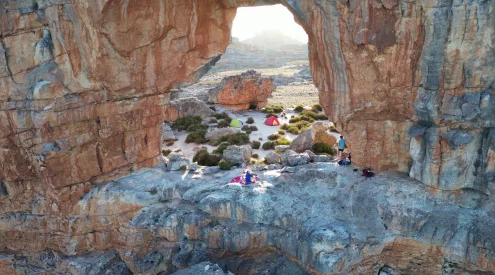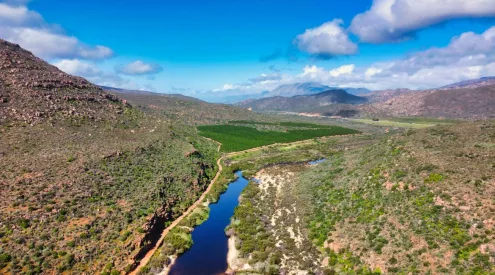I know, I know. You’ve seen a list like this before. We all have. But this one is slightly different in that I’ve canvassed hiking professionals and aficionados from across the country to ensure this list is as close as it can be to the definitive list.
If you were looking for a list of incredible must-do multi-day hikes to tick off over the next five, ten, twenty years then this is it.
There are some notable absentees from the list. For example, the Fish River was left because it’s in Namibia. The glorious and incomparable Rim of Africa is a once-a-year, guided nine-week trail that we highly recommend but wasn’t included as it’s not a typical trail. Now, have a look at this list, pick your next trail and get out there!
1. Amatola Trail
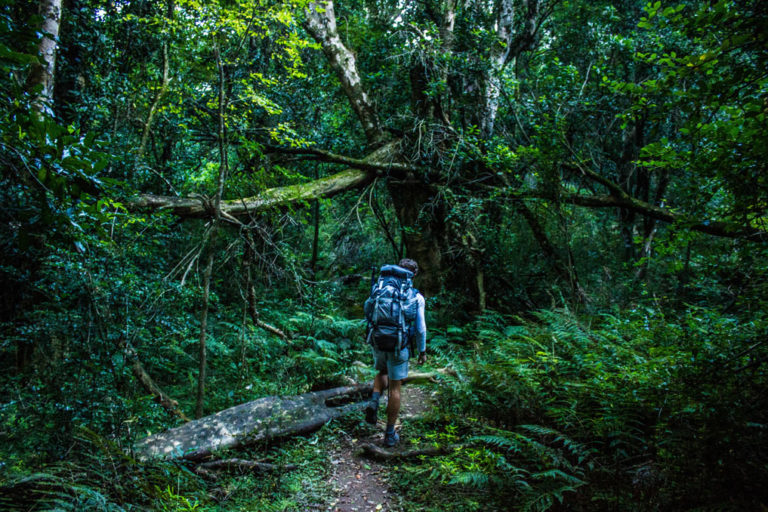
Cape Parrots and Knysna turacos can often be heard, and seen, in the mornings. Credit: Matthew Sterne
Often referred to as the toughest trail in South Africa, the Amatola Trail is worthy of other superlatives too. It’s the forest paths – full of tiny luminescent ferns, moss-covered trees and a canopy of leaves that form a ceiling above the verdant cavern – that I remember most. Each day promises 10 hours of descending and ascending ahead, through lush valleys and up to the flower-strewn grasslands and peaks of the Amatola Range. This is a gruelling, self-guided trail and you have to take everything with you. Should something go wrong in this remote mountain wilderness, it’s a long way back to civilisation.
Type: Backpacking with huts
Duration: 6 days
Distance: 100 km
Cost: From R2000
2. Pondo Trail

Each dinner is a fully catered feast with the likes of fillet with mushroom sauce, chicken curry and a seafood platter. Credit: Matthew Sterne
I believe that if the world knew about this trail, it would be on every hiker’s wishlist. It’s the wildest part of the Wild Coast, from Mtentu down to Manteku, with rivers meeting the shore every two-and-a-half kilometres, on average. Every day is different, a mixture of beautiful grasslands, ravines, a shelf section, a cliff section and a string of lovely beaches. Waterfall bluff, a rare phenomenon of waterfalls tumbling into the ocean, is the most picturesque section but it’s all breathtakingly beautiful. And to make it even better, this hike with Wild Child Africa is fully catered, featuring local seafood, cold G&Ts waiting for you at the end of the day and local, knowledgeable guides.
Type: Slackpacking with tented huts
Duration: 5 days
Distance: 100 km
Cost: R10 500 pp (Sold out for 2021, but bookings open for 2022)
3. Wild Coast Trail

Coffee Bay is the final destination of the Wild Coast Trail. Credit: Getaway
Another beautiful hike in the former Transkei, this area offers untouched beaches, rolling grassy hills dotted with colourful huts and the occasional beach-loitering cow. It generally starts in Port St. Johns and finishes in Coffee Bay, with overnight stops in rural villages. Wildside Hiking offers guided hiking tours, which are all led by guides born and raised in the surrounding villages. Each night, the homesteads provide a cooked Xhosa lunch and activities along the way include fishing, crayfishing, sangoma visit, traditional dance with locals and isiXhosa lessons. The best time to visit is between May and mid-August.
Type: Backpacking with traditional huts
Duration: 5 days
Distance: 61 km
Cost: From R3 750 per person, includes shuttle to and from East London and one night’s accommodation in Port St. John’s.
4. Otter Trail
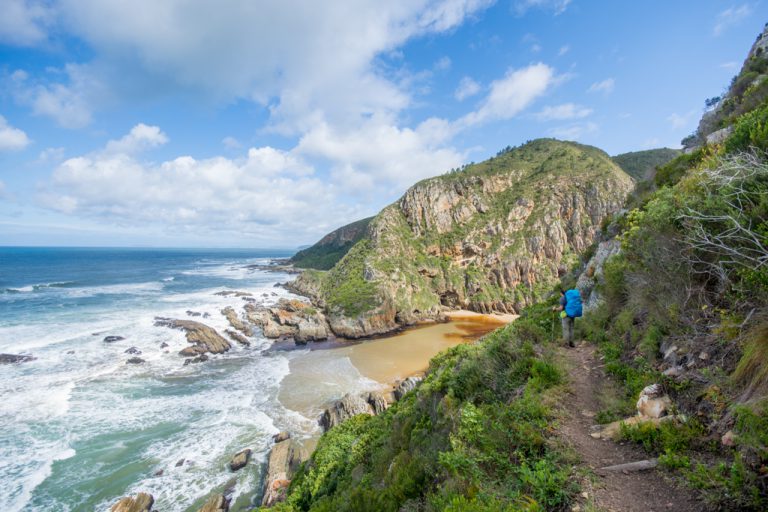
The first look at the dreaded (but beautiful) Bloukrans River crossing on day three of the Otter Trail. Credit: Melanie van Zyl
Widely regarded as one of the best hiking trails in the world, they don’t call the Otter ‘The Prince of Trails’ for nothing. The 45 km coastal walk from Storms River to Nature’s Valley will leave even your chattiest aunt speechless with its rockpools, secluded huts and pristine coastline. She might struggle to make it to the end of the hike though. Steep climbs, secret waterfalls and midnight river crossings are all part of the fun. Permits sell out a year in advance for South Africa’s favourite trail, but it’s worth the wait.
Style: Backpacking with huts
Duration: 5 days
Distance: 45 km
Cost: R1 465 per person
5. Whale Trail
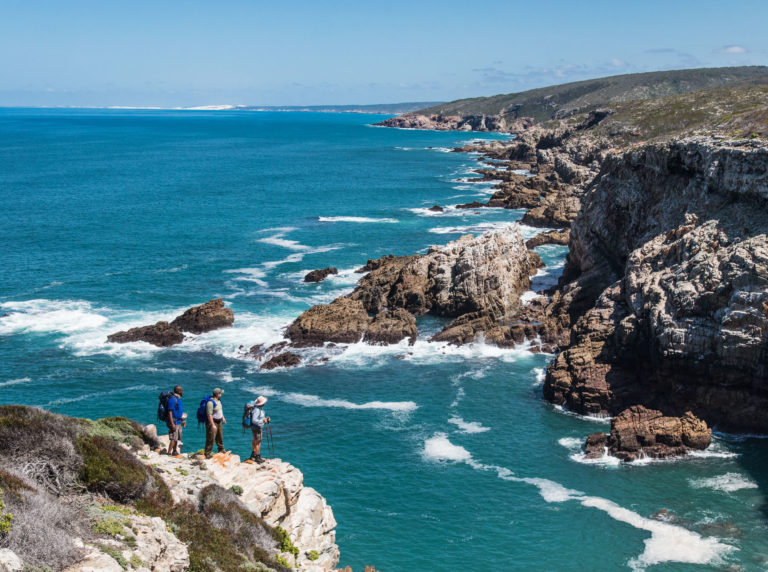
The Whale Trail in the Western Cape is a fan-favourite. Credit: Getaway
It’s not just the vultures, coastal beauty and ocean splendour going on here, but the accommodation is in a league of its own. Calling these houses huts is like calling the Drakensberg a mountain. They’re a bit more than that. Expect lazy strolls on the beach, excess wine waiting for you in the huts (if you’re doing it right) and decent beds. Oh, and between June and November, the coastline is transformed as southern right whales migrate here to breed and look after their young.
Type: Slackpacking
Duration: 5 days
Distance: 55 km
Cost: Peak price is R2 900 and off-peak is R1 795
6. Central Cederberg Circuit
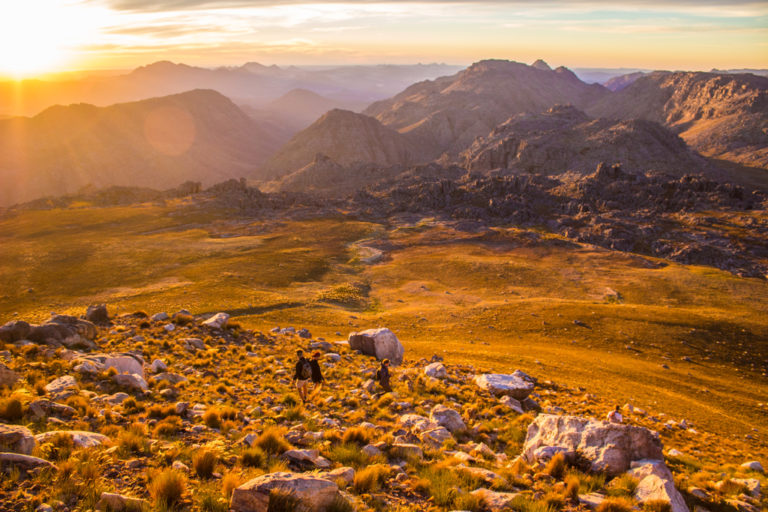
Descending from Sneeuberg a little late in the day, but with golden views. Sneeuberg is the highest peak in the Cederberg. Credit: Matthew Sterne
The Cederberg can be a tricky place to make sense of for the uninitiated. Where does it begin? Where does it end? And, most importantly, where should we hike? It’s a huge wilderness area that takes many visits to truly grasp, but this five-day route is probably the best way to get properly acquainted. According to our friends at Hiking South Africa, “This route explores some of the most iconic places in the Cederberg and is one of the best five-day hikes I have done anywhere. It takes you past Crystal Pools, Welbedacht Cave, the Wolfberg Arch and Wolfberg Cracks, the Maltese Cross and Sneeuberg.”
Type: Wild camping
Duration: 5 days
Distance: 72 km
Cost: R740
7. Mnweni Circuit
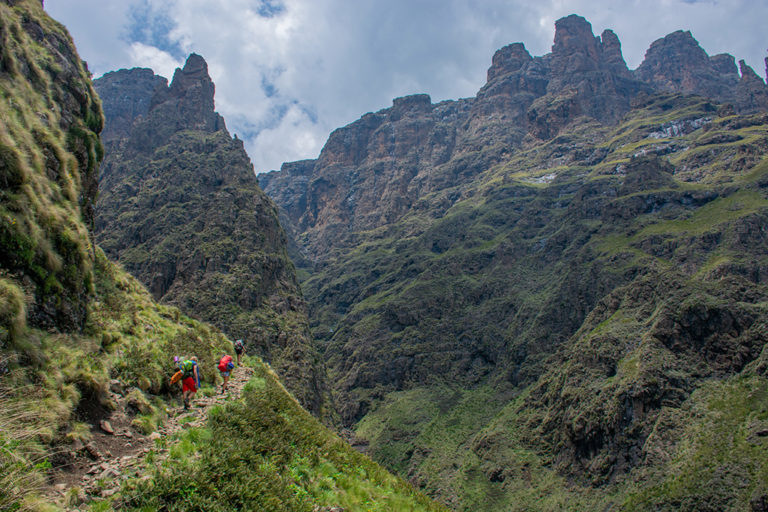
The northern Drakensberg’s mighty Mnweni Pass is not in a formally protected area, but remains wild and rugged nonetheless. Credit: Melanie van Zyl
Similarly to the Cederberg, the Drakensberg has so many trails and routes that it can be difficult to choose which one to take. In recent years, Mnweni has emerged as a favourite amongst those in the know and is regarded as one of the most beautiful parts of the high Berg. Sandwiched between the better-known Royal Natal National Park and Cathedral Peak, this hiking trail is managed by the amaNgwane Tribal Authority, traversing land occupied by traditional Zulu communities and small-scale farmers.
Type: Wild camping
Duration: 3 days
Distance: 40 km
Cost: From R500 pp
8. Giant’s Cup Trail
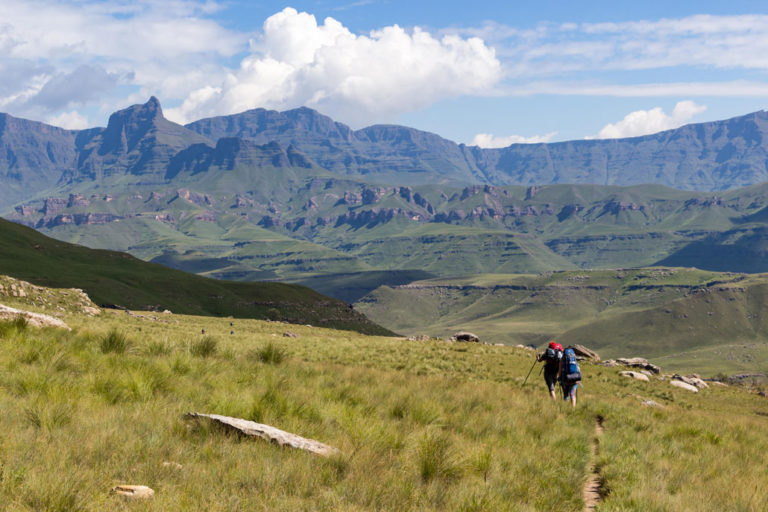
The Giant’s Cup traverses the Lower Berg, granting epic views of the Drakensberg peaks. Credit: Arno van der Heever
The only fully hutted trail in the Drakensberg, the Giant’s Cup Trail is a fantastic way of experiencing the lower Berg. It serves up glorious panoramic views, grassy plains, spectacular valleys with beautiful streams and pools, weathered rock formations, varied terrain and a well laid-out, well-marked trail. It’s considered an ideal trail for first-time visitors to the Drakensberg.
Type: Backpacking with huts
Duration: 5 days
Distance: 59 km
Cost: R600 pp
9. Hluhluwe-iMfolozi Primitive Wilderness Trail

Wilderness trails guide Nunu Jobe follows in the footsteps of legendary Zulu trackers and rangers. Credit: Scott Ramsay
On foot in a Big 5 wilderness. Now this is living. The concept of wilderness trails was introduced over 60 years ago by Ian Player, the man behind Operation Rhino (and Gary Player’s brother), as a means of introducing people from all corners of the globe and from all walks of life to the life-changing process brought about by walking through the wilderness on foot and experiencing the wonder of nature firsthand. This is a raw bush experience, sleeping out at night and taking turns to keep watch over your mates while lions, hyenas and leopards prowl in the darkness. Ezemvelo KZN Wildlife offers a range of trails to choose from, all offering a chance to experience the bush at a very personal level.
Type: Wild camping
Duration: 4 days
Distance: Varies
Cost: R4 950 pp
10. Outeniqua Trail

The Outeniqua Trail has a better forest than the nearby Tsitsikamma Trail. Credit: Dania Petrik
This spectacular trail can be conquered as a series of day walks or over a full seven-day period, between George and Knysna. Carrying food for a trip that long can get heavy but you’ll be rewarded with the unsurpassed scenery that the Outeniqua Mountains are famous for.
There are numerous river crossings, some of which are impassable after heavy rains so it’s important to plan accordingly. The huts offer shelter, firewood, grids, water and rudimentary bedding. There’s electricity at the Millwood, Diepwalle and Harkerville huts. Hikers do not have to hike the full seven days; two or three days are allowed, connecting routes making this possible.
Type: Backpacking with huts
Duration: 7 days
Distance: 108 km
Cost: R630
11. Leopard Trail
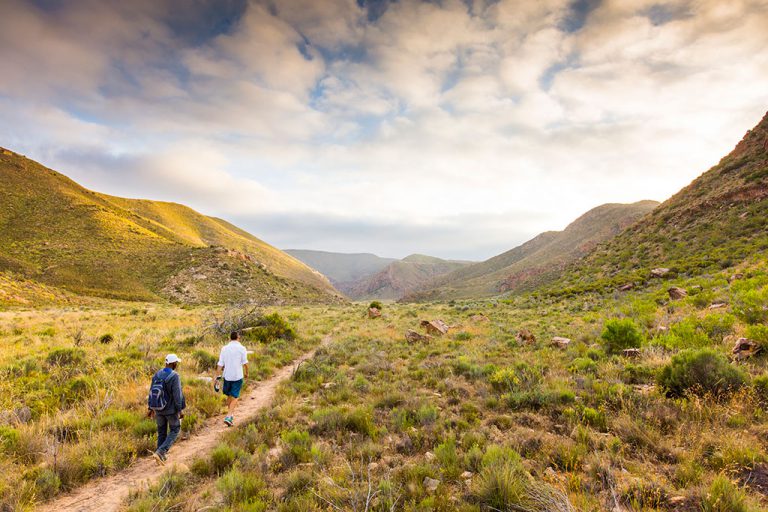
The Leopard Trail has numerous side trails that hikers can choose to take as they go. We recommend them all. Credit: Teagan Cunniffe
Set in the magnificent Baviaanskloof World Heritage Site Wilderness Reserve, the Leopard Trail has quickly grown in popularity since opening in 2016. Baviaanskloof – the name is derived from the Dutch for “Valley of Baboons” – is a narrow valley blessed with pristine natural grandeur, and run with narrow gorges, streams, steep mountain passes and vast waving grassland plains.
It’s just under 200 km in length and, due to lying at a lower altitude than the Karoo to the north, has a lush landscape supporting a wide variety of fauna and flora. It’s a circular route and a catered hike, ensuring it’s easier to handle those uphills and take in the views of the huge expanse of mountains, the beautiful flowers and enjoying the river along much of the route.
Type: Slackpacking with tents
Duration: 4 days
Distance: 60 km
Cost: R1 680
12. Timbavati Primitive Trail
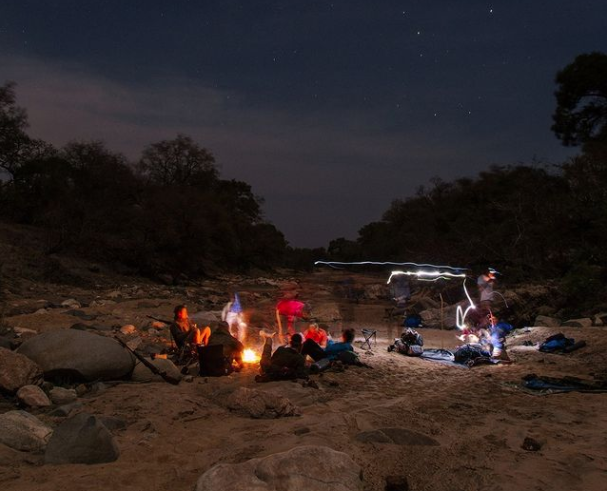
Nights have a very different feel to the day, on a hike with Lowveld Trails Co. Taking watch is one of the standout memories. Credit: Lowveld Trails Co.
According to hiking expert, Hlengiwe Magagula, “The other rich zone for backpacking safaris is the Kruger region, with a multitude of options in both the national park and adjacent Greater Kruger reserves. The SANParks-operated backpacking trails always use a tent, so if you’d prefer the sleep-out experience, a good option is to book a trail with Lowveld Trails Company. This outfit is run by experienced trail-guiding instructors, and will bring you into either Timbavati Private Nature Reserve or Makuya Nature Reserve, which both share unfenced boundaries with the Kruger Park itself. The Lowveld Trails Company operates a three-night primitive trail for groups of up to eight.”
Type: Wild camping
Duration: 4 days
Distance: Varies
Cost: R4 250









